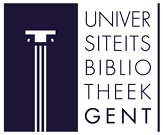UJI EMPAT ISOLAT Trichoderma harzianum PADA PENGOMPOSAN KOTORAN SAPI DAN AYAM DAN PENGARUHNYA TERHADAP PERTUMBUHAN MENTIMUN IN PLANTA
Abstract
Penelitian bertujuan: 1) mengetahui pengaruh empat isolat Trichoderma harzianum dalam pengomposan kotoran (ayam dan sapi), 2) interaksi T. harzianum dan kotoran terhadap pertumbuhan, dan 3) kompos terbaik untuk tanaman mentimun. Rancangan Acak Kelompok digunakan dengan 10 perlakuan dan 3 ulangan. Perlakuan terdiri atas kotoran ayam dan sapi, T. harzianum. T10, T213, T14, dan T16.. Variabel yang diamati pH, C/N rasio, suhu, warna kompos, kepadatan dan kegigasan konidium, komponen pertumbuhan, analis jaringan tanaman, dan serapan N tanaman. T. harzianum T10 dan T14 mampu menurunkan C/N rasio pada kotoran sapi. T. harzianum terbaik adalah T14 pada kotoran sapi yang memiliki nilai tertinggi pada panjang tanaman sebesar 76 cm, panjang akar 22 cm, dan berat basah tajuk 14,96 g. T. harzianum T10 pada kotoran sapi memiiki nilai tertinggi pada berat tanaman segar 17,86 g, bobot basah akar 3,04 g, dan jumlah daun 8,88 helai.
DOI: 10.37637/ab.v3i1.424
Keywords
Full Text:
PDFReferences
Abdulrasheed, M., Ibrahim, H. I., Maigari, F. U., Umar, A. F., & Ibrahim, S. (2018). Effect of soil pH on composition and abundance of nitrite-oxidising bacteria. Journal of Biochemistry, Microbiology and Biotechnology (JOBIMB), 6(1), 27–34.
Adamczyk, B., Smolander, A., Kitunen, V., & Godlewski, M. (2010). Proteins as nitrogen source for plants. Plant Signaling & Behavior, 5(7), 817–819. https://doi.org/10.4161/psb.5.7.11699
Amoo, A. E., & Babalola, O. O. (2017). Ammonia-oxidizing microorganisms: key players in the promotion of plant growth. Journal of Soil Science and Plant Nutrition, 17(4), 935–947. https://doi.org/10.4067/S0718-95162017000400008
Bani, A., Pioli, S., Ventura, M., Panzacchi, P., Borruso, L., Tognetti, R., Tonon, G., & Brusetti, L. (2018). The role of microbial community in the decomposition of leaf litter and deadwood. Applied Soil Ecology, 126, 75–84. https://doi.org/10.1016/j.apsoil.2018.02.017
Basu, S., Bose, C., Ojha, N., Das, N., Das, J., Pal, M., & Khurana, S. (2015). Evolution of bacterial and fungal growth media. Bioinformation, 11(4), 182–184. https://doi.org/10.6026/97320630011182
Chairul, C. (2003). Identifikasi secara cepat bahan bioaktif pada tumbuhan di lapangan. Berita Biologi, 6(4), 621–628.
Chen, J. H. (2006). The combined use of chemical and organic fertilizers and/or biofertilizer for crop growth and soil fertility. International Workshop on Sustained Management of the Soil-Rhizosp Here Sistem for Efficient Crop Production and Fertilizer Use, 1–11.
Duan, Y. H., Zhang, Y. L., Ye, L. Y., Fan, X. R., Xu, G. H., & Shen, Q. R. (2007). Responses ofrice cultivars with different nitrogenuse efficiency to partial nitrate nutrition. Ann. Bot., 99, 1153–1160.
Fahmi, A., Radjagukguk, B., & Heru, P. . (2009). Kelarutan fosfat dan ferro pada tanh sulfat yang diberi bahan organik jerami padi. J. Tanah Trop., 14(2), 151–156.
Fumasoli, A., Bürgmann, H., Weissbrodt, D. G., Wells, G. F., Beck, K., Mohn, J., Morgenroth, E., & Udert, K. M. (2017). Growth of Nitrosococcus -Related Ammonia Oxidizing Bacteria Coincides with Extremely Low pH Values in Wastewater with High Ammonia Content. Environmental Science & Technology, 51(12), 6857–6866. https://doi.org/10.1021/acs.est.7b00392
Gallavotti, A. (2013). The role of auxin in shaping shoot architecture. Journal of Experimental Botany, 64(9), 2593–2608. https://doi.org/10.1093/jxb/ert141
Gong, W., Yan, X., & Wang, J. (2012). The effect of chemical fertilizer on soil organic carbon renewal and CO2 emission—a pot experiment with maize. Plant and Soil, 353(1–2), 85–94. https://doi.org/10.1007/s11104-011-1011-8
Gupta, K. K., Aneja, K. R., & Rana, D. (2016). Current status of cow dung as a bioresource for sustainable development. Bioresources and Bioprocessing, 3(1), 28. https://doi.org/10.1186/s40643-016-0105-9
Halifu, S., Deng, X., Song, X., & Song, R. (2019). Effects of Two Trichoderma Strains on Plant Growth, Rhizosphere Soil Nutrients, and Fungal Community of Pinus sylvestris var. mongolica Annual Seedlings. Forests, 10(9), 758. https://doi.org/10.3390/f10090758
Hanafiah, K. A. (2005). Dasar-dasar Ilmu Tanah. Raja Grafindo Persada.
Haryono, J. (2007). Pengaruh Pemasteuran Medium Tanaman dan Pengendalian HayatiTerhadap Penyakit Busuk Hati Pada Pembibitan Pisang Di Persemaian PT. Nusantara Tropical Fruit Lampung. Universitas Jenderal Soedirman.
Heydari, A., & Pessarakli, M. (2010). A Review on Biological Control of Fungal Plant Pathogens Using Microbial Antagonists. Journal of Biological Sciences, 10(4), 273–290. https://doi.org/10.3923/jbs.2010.273.290
Jannoura, R., Joergensen, R. G., & Bruns, C. (2014). Organic fertilizer effects on growth, crop yield, and soil microbial biomass indices in sole and intercropped peas and oats under organic farming conditions. European Journal of Agronomy, 52, 259–270. https://doi.org/10.1016/j.eja.2013.09.001
Khater, E. S. G. (2015). Some Physical and Chemical Properties of Compost. International Journal of Waste Resources, 05(01), 172. https://doi.org/10.4172/2252-5211.1000172
Khatoon, H., Solanki, P., Narayan, M., Tewari, L., & Rai, J. P. N. (2017). Role of microbes in organic carbon decomposition and maintenance of soil ecosystem. International Journal of Chemical Studies, 5(6), 1648–1656.
Kotasthane, A., Agrawal, T., Kushwah, R., & Rahatkar, O. V. (2015). In-vitro antagonism of Trichoderma spp. against Sclerotium rolfsii and Rhizoctonia solani and their response towards growth of cucumber, bottle gourd and bitter gourd. Eur. J. Plant Pathol., 141, 523–543.
Kyuma, K. (2004). Paddy Soil Science. Kyoto University Press.
Lahadassy, J., Mulyati, A. M., & Sanaba, A. H. (2007). Pengaruh konsentrasi pupuk organik padat daun gamal terhadap tanaman sawi. Jurnal Agrisistem, 3, 81–89.
Martínez-Medina, A., Del Mar Alguacil, M., Pascual, J. A., & Van Wees, S. C. M. (2014). Phytohormone Profiles Induced by Trichoderma Isolates Correspond with Their Biocontrol and Plant Growth-Promoting Activity on Melon Plants. Journal of Chemical Ecology, 40(7), 804–815. https://doi.org/10.1007/s10886-014-0478-1
Mokhele, B., Zhan, X., Yang, G., & Zhang, X. (2012). Review: Nitrogen assimilation in crop plants and its affecting factors. Canadian Journal of Plant Science, 92(3), 399–405. https://doi.org/10.4141/cjps2011-135
Qiu, Z., Wu, X., Zhang, J., & Huang, C. (2017). High temperature enhances the ability of Trichoderma asperellum to infect Pleurotus ostreatus mycelia. PLOS ONE, 12(10), 1–16. https://doi.org/10.1371/journal.pone.0187055
Rahimah, Mardhiansyah, M., & Yoza, D. (2015). Pemanfaatan kompos berbahan baku ampas tebu (Saccharum sp.) dengan bioaktivator Trichoderma spp. sebagai media tumbuh semai Acacia crassicarpa. Jom Faperta, 2(1), 1–17.
Rajesh, R. W., Rahul, M. S., & Ambalal, N. S. (2016). Trichoderma: A significant fungus for agriculture and environment. African Journal of Agricultural Research, 11(22), 1952–1965. https://doi.org/10.5897/AJAR2015.10584
Rubio, M. B., Hermosa, R., Vicente, R., Gómez-Acosta, F. A., Morcuende, R., Monte, E., & Bettiol, W. (2017). The Combination of Trichoderma harzianum and Chemical Fertilization Leads to the Deregulation of Phytohormone Networking, Preventing the Adaptive Responses of Tomato Plants to Salt Stress. Frontiers in Plant Science, 2(8), 1–14. https://doi.org/10.3389/fpls.2017.00294
Santoso, S. E., Soesanto, L., & Haryanto, T. A. D. (2007). Penekanan hayati penyakit molerpada bawang merah dengan Trichoderma harzianum, Trichoderma koningii, danPseudomonas fluorescens P60. Jurnal Hama Dan Penyakit Tumbuhan Tropika, 7(1), 53–61.
Saravanakumar, K., Fan, L., Fu, K., Yu, C., Wang, M., Xia, H., Sun, J., Li, Y., & Chen, J. (2016). Cellulase from Trichoderma harzianum interacts with roots and triggers induced systemic resistance to foliar disease in maize. Scientific Reports, 6(1), 35543. https://doi.org/10.1038/srep35543
Savci, S. (2012). Investigation of Effect of Chemical Fertilizers on Environment. APCBEE Procedia, 1, 287–292. https://doi.org/10.1016/j.apcbee.2012.03.047
Saxena, M., Saxena, J., Nema, R., Singh, D., & Gupta, A. (2013). Phytochemistry of medicinal plants. Journal of Pharmacognosy and Phytochemistry, 1(6), 168–182.
Schwarze, F. W. M. R., Jauss, F., Spencer, C., Hallam, C., & Schubert, M. (2012). Evaluation of an antagonistic Trichoderma strain for reducing the rate of wood decomposition by the white rot fungus Phellinus noxius. Biological Control, 61(2), 160–168. https://doi.org/10.1016/j.biocontrol.2012.01.016
Singh, R., Shukla, G., Kumar, A., Rani, A., & Girdharwal, V. (2015). Decomposition of wheat crop residues by fungi. Journal of Academia and Industrial Research (JAIR), 4(1), 37–39.
Singh, S. P., Singh, H. B., Singh, D. K., & Rakshit, A. (2014). Trichoderma-mediated enhancement of nutrient uptake and reduction in incidence of Rhizoctonia solani in tomato. Egyptian Journal of Biology, 16(1), 29–38. https://doi.org/10.4314/ejb.v16i1.4
Soesanto, L., oedharmono, N. Prihatiningsih, A., Manan, E., Iriani, & Pramono, J. (2005). Potensi agensia hayati dan nabati dalam mengendalikan penyakit busuk rimpang jahe. Jurnal Hama Dan Penyakit Tumbuhan Tropika, 5(1), 50–57.
Soesanto, L., & Rahayunati, R. F. (2009). Pengimbasan ketahanan bibit pisang Ambon Kuning terhadap penyakit layu Fusarium dengan beberapa jamur antagonis. J. Hama Dan Penyakit Tumbuhan Tropika, 9(2), 130–140.
Stoate, C. (2001). Ecological impacts of arable intensification in Europe. J Environ Manage, 63(4), 337–365.
Sukmawati. (2011). Beberapa perubahan sifat kimia alofan dari andisol setelah menjerap asam humat dan asam silikat. Media Litbang Sulteng, 4(2), 118–124.
Sulistyani, Zaman, B., & Oktiawan, W. (2017). Pengaruh penambahan lindi dan mol nasi basi terhadap waktu pengomposan sampah organik. Jurnal Teknik Lingkungan, 6(2), 1–10.
Sumpena, U. (2001). Budidaya Mentimun Intensif dengan Mulsa Secara Tumpang Gilir. Penebar Swadaya.
Surtinah. (2013). Pengujian kandungan unsur hara dalam kompos yang berasal dari serasah tanaman jagung manis (Zea mays saccharata). Jurnal Ilmiah Pertanian, 11(1), 16–26.
Taufik, M. (2011). Aplikasi Rhizobakteri dan Trichoderma spp. Terhadap Pertumbuhan Tanaman dan Kejadian Penyakit Busuk Pangkal Batang dan Kuning Pada Tanaman Lada (Piper nigrum L). Hasil Penelitian disampaikan dalam Seminar dan Pertemuan Tahunan XXI PEI, PFI Komda Sulawesi .
Wagh, S. P., & S.V., G. (2015). Effect of cow-dung slurry and Trichoderma spp. on quality and decomposition of teak and bamboo leaf compost. Research Journal of Agriculture and Forestry Sciences, 3(2), 1–4.
Wulandari, D., Zulfita, D., & Surachman. (2012). Pengaruh pengomposaner Trichoderma harzianum terhadap pertumbuhan dan hasil sawi hijau pada tanah gambut. Jurnal Sains Mahasiswa Pertanian, 2(1).
Yelianti, Kasih, U., Kasim, M., & Husin, E. F. (2009). Kualitas pupuk organik hasil pengomposanis beberapa bahan organik dengan pengomposanernya. J. Akta Agtosia, 12(1), 1–7.
Zhang, S., Gan, Y., & Xu, B. (2016). Application of Plant-Growth-Promoting Fungi Trichoderma longibrachiatum T6 Enhances Tolerance of Wheat to Salt Stress through Improvement of Antioxidative Defense System and Gene Expression. Frontiers in Plant Science, 6(7), 1405. https://doi.org/10.3389/fpls.2016.01405
Zhao, D., Reddy, K. R., Kakani, V. G., & Reddy, V. R. (2005). Nitrogen deficiency effects on plant growth, leaf photosynthesis, and hyperspectral reflectance properties of sorghum. Europ. J. Agronomy, 22, 391–403.
Refbacks
- There are currently no refbacks.


























